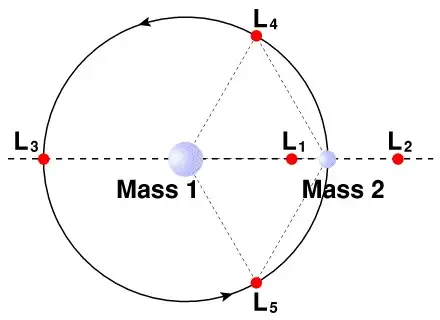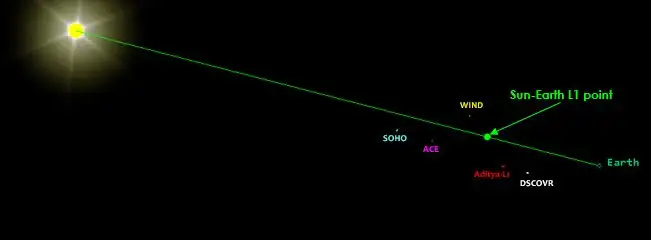ISRO conducts space situation assessment for Aditya L1 mission
By R. Anil Kumar
- An assessment of space situation around Sun-Earth Lagrange Point L1
- Aditya-L1 will operate in a halo orbit around the Sun-Earth L1 point, located approximately 1.5 million kilometers from Earth.
- There are currently four operational spacecraft at L1- WIND, Solar and Heliospheric Observatory (SOHO), Advanced Composition Explorer (ACE) and Deep Space Climate Observatory (DSCOVER).
Bangalore, September 26. ISRO’s Aditya-L1 mission, launched on September 2, 2023, is India’s first mission dedicated to studying the Sun, specifically the photosphere, chromosphere, and corona of Sun. The spacecraft has commenced its journey to its final destination, the Sun-Earth Lagrange’s Point 1 (L1), on September 18, 2023.

Lagrange points, also known as libration points, are unique locations in space where the gravitational force of two massive bodies (like Sun and Earth) precisely equals the centripetal force required for a small object (like spacecraft) to move with them.
This makes Lagrange points an excellent location for spacecrafts as orbit corrections and hence fuel requirements, needed to maintain the desired orbit, are kept at a minimum.
For any combination of two orbital bodies (like Sun-Earth and Earth-Moon systems), there are five Lagrange points (L1 to L5), all in the orbital plane of the two large bodies.
The three points – L1, L2, and L3 are dynamically unstable and lie on the line through the centres of the two large bodies, while the remaining two points – L4 and L5 are stable points and each acts as the third vertex of an equilateral triangle formed with the centres of the two large bodies.
L1 is particularly significant because it is situated between the two primaries (the Sun and Earth), making it an ideal location for spacecrafts because they allow continuous observation of primary bodies, continuous communication with earth and an unobstructed view of celestial bodies. These orbits are well-suited for scientific missions like Aditya which will act like a solar observatory around L1 and communication to Earth.
Aditya-L1 will operate in a ‘Halo orbit’ around the Sun-Earth L1 point, located approximately 1.5 million kilometers from Earth. Halo orbits are periodic, three-dimensional orbits around a Lagrange Point (L1, L2 or L3) and involve an out-of-plane motion component relative to the primary bodies.
The orbit is large enough in size to be continuously viewed from Earth and would appear to form a halo around the Lagrange Points (here L1 for Aditya L1).

Various past missions have utilized the Sun-Earth L1 point, including the International Sun-Earth Explorer (ISEE-3), the Genesis mission, ESA’s LISA Pathfinder, China’s Chang’e 5 lunar orbiter, and NASA’s Gravity Recovery and Interior Recovery (GRAIL) mission.
These missions have contributed to our understanding of space and our ability to monitor space weather events.
Several operational spacecrafts are currently stationed at the Sun-Earth L1 point. These spacecraft at Sun-Earth L1 point provide vital early warnings on adverse space weather events that help protect orbiting space assets and ground based infrastructure.
Despite the extremely sparse population in L1 point and the vast separation between them, close approach assessment for an operational spacecraft at Lagrange Point Orbit (LPO) is desirable because of the large positional uncertainty and sensitivity to other perturbative forces. Orbit Determination (OD)forLPO requires tracking data collection over an extended period of time, typically a few days.
The typical OD accuracy is of the order of a few km. For Aditya L1 mission, ISRO plans to carry out such analysis periodically to ensure safety and avoid any possibility of close approaches with other neighbouring spacecrafts, with the support from NASA-JPL.





